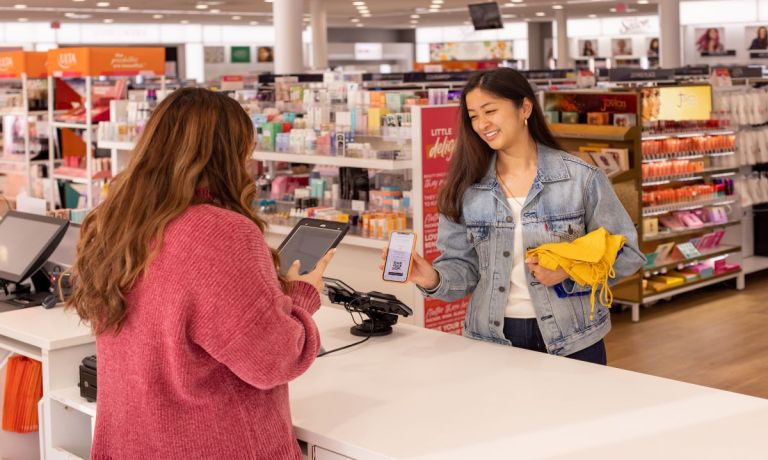PayPal’s Reverse Logistics Unit Brings ‘Happy’ to the Dreary Returns Biz

As goes online sales growth, so grows the ocean of returns generated for any number of reasons, from fit to finances. The National Retail Federation (NRF) recently put a number on it.
In January the NRF said that merchants expect more than $761 billion in merchandise sold last year to be returned by consumers — that’s nearly 17% of U.S. retail sales, pegged at $4.5 trillion in 2021.
That’s bad news for merchants on many levels, said David Sobie, vice president of Happy Returns at PayPal. PayPal announced on Monday (March 28) that it’s surfing the returns tidal wave in 2022 by offering merchants that are part of the PayPal network use of its Happy Returns service and exchange portal at no additional cost.
Additionally, Happy Returns is expanding its Return Bars drop off locations program, introducing Return Bars in 1,300 Ulta Beauty stores. It’s a multifaceted development.
As Sobie told Karen Webster, consumers get a far easier way to do all those returns, while retail chains — now including Ulta — benefit because, “This is a new way to acquire customers.”
By building a process requiring no box, no printing of labels and a simple QR code scan at a Return Bar location, Happy Returns is taking the friction out of an irritating chore for shoppers and supplying an instant refund when they return an item – ideally to spend at that merchant location.
“We live in an instant gratification world,” Sobie told Webster. “For merchants using our software and offering the drop-off network as an alternative to mail, we see north of 70% of the time shoppers opt into Happy Returns.”
Ulta and other Return Bar retail partners benefit from instant refunds being instantly available as they stand in that store, a new way to acquire customers, he said. The consumer sees their refund appear instantly while still at the Return Bar, opening the door to some browsing and an incremental purchase from a customer that may be entirely new to the brand.
“That’s the connection we’re trying to facilitate,” he said.
See also: PayPal Acquires Happy Returns eCommerce Return Platform
Merchants Benefit From Efficiency With a Smile
As far as consumers are concerned, returns go to a great outlet store in the hereafter.
They don’t. They accumulate. Then merchants are unhappy.
Without a system to manage the mountain of eCommerce returns, it’s a problem from the loading docking to the boardroom as the cost of returns and the inefficiencies of dealing with them gum up operations and bog down associates.
“There’s been so much written about the relentless rise of e-commerce,” Sobie said. “What’s less written about is that as online shopping grows, this return challenge grows because shoppers return online purchases at rates that are three to four times higher than brick-and-mortar.”
Return Bar locations — now numbering in the range of 5,000 with the addition of Ulta Beauty — are supplied with reusable shipping totes and polybags prelabeled with QR codes. The system scans the code, and the magic begins with seamlessness for the consumer, and data for the retailer.
“Using that example,” he said, “I’m returning a pair of leggings, size large, color black. When I bring my QR code into a store and that QR code is scanned it’ll say, ‘This is David, we’re expecting him to bring a pair of black leggings,’ so the store associate will check the item in.”
Associates simply verify color, size, brand and confirm which items are present. The store takes those items, puts them into a polybag provided to the retailer and scans a QR code. As soon as that happens, the item associated with that bag is a piece of inventory that Happy Returns tracks. All items from all merchants go into the same bag.
Shipping aggregation lowers returns costs considerably. It also cuts contact center costs and ups consumer experience by reducing service calls and inquiries. And with buyers of other brands entering different stores for returns, it’s a customer-acquisition-cost-efficiency trifecta.
See also: Fighting The Friction In Retail Returns
Forward Sales, Reverse Logistics
Noting that other major players like Amazon are doing in-store returns with its Kohl’s partnership — a year after Happy Returns debuted — it’s a trend likely to grow if the NRF is even close on the returns figure. Retailers should be shopping for better ways to manage returns and transform them into sales opportunities cost-efficiently, and that’s what Happy Returns is going for, as it equips PayPal Checkout merchants with new ways to service customers.
Sobie said that today’s announcement is step one, the first time PayPal is explicitly linking Happy Returns as a benefit for PayPal Checkout merchants. The vision is how PayPal and Happy Returns can make each of their respective ecosystems more valuable and reinforce one another. For PayPal Checkout merchants, they now get best-in-class software to solve the returns problem that every online shopper has.
Asked by Webster as to whether this is also the first step to serving PayPal offers to shoppers who are returning merchandise to PayPal Checkout merchants instore as a way to boost PayPal instore acceptance, Sobie had this to say.
“Nothing I can comment on right now, but you’re definitely connecting the dots in a way that is logical and speaks to our ambitions as we think about trying to support the shopper throughout the journey – You’re on the right track.”
See also: Happy Returns by PayPal, Staples Team to Offer In-Person Returns